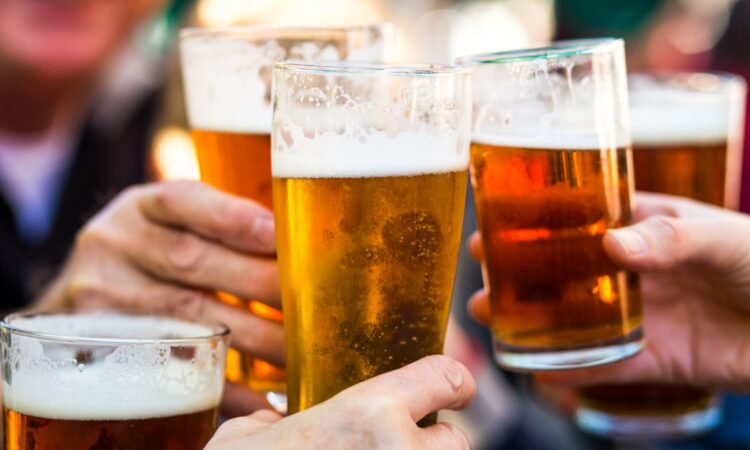Weekend Money: The rise of no-alcohol Britain; find out how much council tax is going up in your area | UK News

In this two-part feature, we’re exploring what Britons cutting back on booze, and students not going out as much, means for the night-time economy. Part one looked at the possible death of the nightclub – read that here. Today, Emily Mee looks at how businesses are adapting…
The UK’s nightlife economy is at risk unless it can adapt to changing attitudes towards alcohol.
As we mentioned in the first part of this feature, adults – especially the younger generations – are drinking far less, and skipping big nights out to save money.
So what will tempt customers back?
For Karl Considine, the “alternative choice” his alcohol-free cocktail bar offers appears to be a huge success.
Love From in Manchester is regularly packed with people sipping cocktails and enjoying a fun night out – but the difference is, everyone there is sober.
“I’m really clear on that – we’re a night-time venue, not a daytime venue. We don’t do coffee, drinks or hot food,” he says.
Karl himself has struggled with alcohol addiction in the past, when he could “never just have a quiet night” and would “always want to take it further”.
While Love From (@love.fromco) is a safe space for those in recovery, Karl is clear the bar is “absolutely” for everyone – including those who are drinkers but just want something different.
He’s had to deal with trolls online who don’t understand the concept, but he says he’s had positive feedback from customers and gets “nice messages” online every day.
Will alcohol-free bars become more popular?
Love From is not the only alcohol-free night-time venue to have popped up in recent years – among others, there’s London’s LGBT club night House of Happiness, and the alcohol-free bar and shop Club Soda.
But Laura Willoughby, who runs Club Soda, says she doesn’t think we’ll see a huge increase in alcohol-free venues because “what people actually want is choice”.
“Ultimately, everywhere where alcohol is served there should be a good choice of alcohol-free so whoever’s in your party can make a choice about what they want to do,” she says.
She explains that Club Soda runs workshops for retailers to learn about alcohol-free products, and those who ended up expanding their alcohol-free menus have seen their group bookings increase.
“Everybody wants to have a nice time – they don’t want to sit there with a tap water or a very sugary soda which they can only have one of – they want to participate fully,” she says.
No longer an afterthought
Low and no-alcohol products are now the fastest growing part of the industry.
Drinks expert Dan Whiteside says the amount and range of products has “exploded” in recent years, and they can be found in most bars and restaurants.
And Liam Davy, head of bars at steakhouse chain Hawksmoor, says he’s seen a “big spike” in sales of non-alcoholic drinks.
His company has started paying more attention to that section of the menu “when, to be honest, in the past it might have been a bit more of an afterthought or something aimed at kids”.
Although most pub and restaurant chains have adapted and now have better low and no-alcohol drinks menus, he says smaller businesses have been slower to make changes.
Then there’s that pervasive marketing problem – the perception that some of these products are overpriced, meaning people will instead opt for a cheap cola or lemonade when they’re not drinking.
So is there anything else businesses can do?
Sacha Lord, night-time economy adviser for Greater Manchester, says he has been advising pubs to offer more event-based nights, such as darts or quizzes, to get people back in the door.
This is an opinion shared by Laura, who says Gen Z is much more experience-led in their social lives.
“It’s not based around the strength of the drink in their glass and more about lovely evenings out,” she says.






